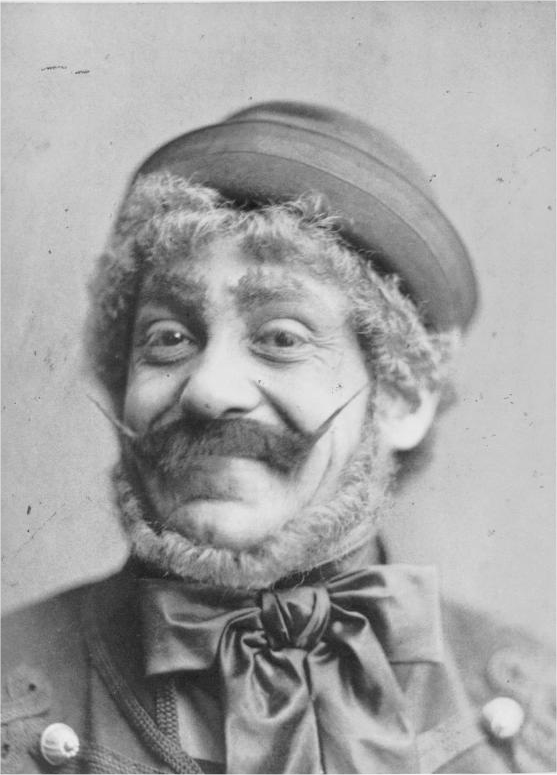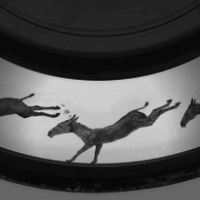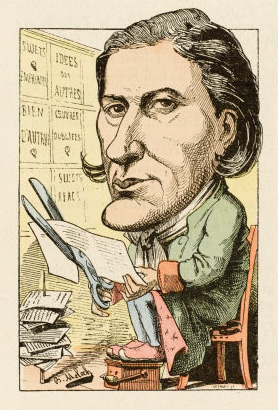|
Riley Center
The Riley Center, also known as the Grand Opera House and formally as the Mississippi State University Riley Center for Education and Performing Arts, is a performing arts and conference center in Meridian, Mississippi. It was added to the National Register of Historic Places in 1972. The Grand Opera House and the adjacent Marks-Rothenberg Department store were built in 1889 by half-brothers Israel Marks and Levi Rothenberg.Grand Opera House Project The opera house was a site for entertainment and theatre for decades. In addition to the extensive theater renovation, the Riley Center project redeveloped the department store as a conference facility. Together the theater and conference space make up the Mississippi State University Riley Center for Education and Performing Arts, owned and operated by Mississippi State Universi ... [...More Info...] [...Related Items...] OR: [Wikipedia] [Google] [Baidu] |
Meridian, Mississippi
Meridian is the List of municipalities in Mississippi, eighth most populous city in the U.S. state of Mississippi, with a population of 35,052 at the 2020 United States census, 2020 census. It is the county seat of Lauderdale County, Mississippi, Lauderdale County and the principal city of the Meridian, Mississippi Micropolitan Statistical Area. Along major highways, the city is east of Jackson, Mississippi, Jackson; southwest of Birmingham, Alabama; northeast of New Orleans, New Orleans, Louisiana; and southeast of Memphis, Tennessee. Established in 1860, at the junction of the Mobile and Ohio Railroad and Southern Railway (U.S.), Southern Railway of Mississippi, Meridian built an economy based on the railways and goods transported on them, and it became a strategic trading center. During the American Civil War, Civil War, General William Tecumseh Sherman burned much of the city to the ground in the Battle of Meridian (February 1864). Rebuilt after the war, the city entered a ... [...More Info...] [...Related Items...] OR: [Wikipedia] [Google] [Baidu] |
The Gypsy Baron
''The Gypsy Baron'' () is an operetta in three acts by Johann Strauss II which premiered at the Theater an der Wien on 24 October 1885. Its German libretto by Ignaz Schnitzer is based on the unpublished 1883 story ''Saffi'' by Mór Jókai. Jokai later published a novel ''A cigánybáró'' (') in 1885 using an expanded version of this same story. While an operetta, ''The Gypsy Baron'' was a departure from Strauss's earlier more comic and light hearted works; displaying more serious tones both musically and dramatically in what musicologist Andrew Lamb (writer), Andrew Lamb described as "a step in Strauss’s quest for the composition of a genuine opera". During the composer's lifetime, the operetta enjoyed great success internationally. It is considered one of Strauss's three best stage works, along with ''Die Fledermaus'' (1874) and ''Eine Nacht in Venedig'' (1883). Composition history Strauss was introduced to Jókai's story prior to its publication as a novel in Pest, Hungary i ... [...More Info...] [...Related Items...] OR: [Wikipedia] [Google] [Baidu] |
Movie Projector
A movie projector (or film projector) is an optics, opto-mechanics, mechanical device for displaying Film, motion picture film by projecting it onto a movie screen, screen. Most of the optical and mechanical elements, except for the illumination and sound devices, are present in movie cameras. Modern movie projectors are specially built video projectors (see also digital cinema). Many projectors are specific to a particular film gauge and not all movie projectors are film projectors since the use of film is required. Predecessors The main precursor to the movie projector was the magic lantern. In its most common setup it had a concave mirror behind a light source to help direct as much light as possible through a painted glass picture slide and a lens, out of the lantern onto a screen. Simple mechanics to have the painted images moving were probably implemented since Christiaan Huygens introduced the apparatus around 1659. Initially, candles and oil lamps were used, but oth ... [...More Info...] [...Related Items...] OR: [Wikipedia] [Google] [Baidu] |
Movie Theater
A movie theater (American English) or cinema (English in the Commonwealth of Nations, Commonwealth English), also known as a movie house, cinema hall, picture house, picture theater, the movies, the pictures, or simply theater, is a business that contains auditoriums for viewing films for public entertainment. Most are commercial operations catering to the general public, who attend by purchasing Ticket (admission), tickets. The film is projected with a movie projector onto a large projection screen at the front of the auditorium while the dialogue, sounds and music are played through a number of wall-mounted speakers. Since the 1970s, subwoofers have been used for low-pitched sounds. Since the 2010s, the majority of movie theaters have been equipped for digital cinema projection, removing the need to create and transport a physical film print on a heavy reel. A great variety of films are shown at cinemas, ranging from animated films to Blockbuster (entertainment), blockbuste ... [...More Info...] [...Related Items...] OR: [Wikipedia] [Google] [Baidu] |
Riley Center Meridian MS
Riley may refer to: Businesses * Riley (brand), British sporting goods brand founded in 1878 * Riley Motor, British motorcar and bicycle manufacturera 1890–1969 * Riley Technologies, American auto racing constructor and team, founded by Bob Riley in 2001 * Riley & Scott, former American racing constructor and racing team founded by Bob Riley and Mark Scott in 1990 * Riley & Son, a British railway locomotive engineering and refurbishment company People and fictional characters * Riley (given name), including a list of people and fictional characters with the given name * Riley (surname), including a list of people and fictional characters with the surname Places United States * Riley, Illinois ** Riley Township, Illinois * Riley, Indiana ** Riley Township, Vigo County, Indiana * Riley, Hancock County, Indiana * Riley Township, Ringgold County, Iowa * Riley County, Kansas ** Riley, Kansas * Riley Township, Clinton County, Michigan * Riley Township, St. Clair County, Michiga ... [...More Info...] [...Related Items...] OR: [Wikipedia] [Google] [Baidu] |
Matilda Sissieretta Joyner Jones
Matilda Sissieretta Joyner Jones (January 5, 1868 or 1869 – June 24, 1933) was an American soprano. She sometimes was called "The Black Patti" in reference to Italian opera singer Adelina Patti. Jones' repertoire included grand opera, light opera, and popular music. Trained at the Providence Academy of Music and the New England Conservatory of Music, Jones made her New York City debut in 1888 at Steinway Hall, and four years later she performed at the White House for President Benjamin Harrison. She sang for four consecutive presidents and the British royal family, and was met with international success. Besides the United States and the West Indies, Jones toured in South America, Australia, India, southern Africa, and Europe. The highest-paid African American performer of her time, later in her career she founded the Black Patti Troubadours (later renamed the Black Patti Musical Comedy Company), a musical and acrobatic act made up of 40 jugglers, comedians, dancers and a chor ... [...More Info...] [...Related Items...] OR: [Wikipedia] [Google] [Baidu] |
Minstrel Show
The minstrel show, also called minstrelsy, was an American form of theater developed in the early 19th century. The shows were performed by mostly white actors wearing blackface makeup for the purpose of portraying racial stereotypes of African Americans. There were very few African-American performers and black-only minstrel groups that also formed and toured. Minstrel shows stereotyped blacks as dimwitted, lazy, buffoonish, cowardly, superstitious, and happy-go-lucky.The Coon Character , Jim Crow Museum of Racist Memorabilia, Ferris State University. Retrieved 29 January 2016.John Kenrick , musicals101.com. 1996, revised 2003. Retrieved 9 November 2011. A recurring character was Jim Crow, an exaggerated portray ... [...More Info...] [...Related Items...] OR: [Wikipedia] [Google] [Baidu] |
Blackface
Blackface is the practice of performers using burned cork, shoe polish, or theatrical makeup to portray a caricature of black people on stage or in entertainment. Scholarship on the origins or definition of blackface vary with some taking a global perspective that includes European culture and Western colonialism. Blackface became a global phenomenon as an outgrowth of theatrical practices of racial misrepresentation, racial impersonation popular throughout Britain and its colonial empire, where it was integral to the development of imperial racial politics. Scholars with this wider view may date the practice of blackface to as early as Medieval Europe's mystery plays when bitumen and coal were used to darken the skin of white performers portraying demons, devils, and damned souls. Still others date the practice to English Renaissance theatre, English Renaissance theater, in works such as William Shakespeare's ''Othello''. However, some scholars see blackface as a specific pract ... [...More Info...] [...Related Items...] OR: [Wikipedia] [Google] [Baidu] |
Ghosts (play)
''Ghosts'' () is a play by the Norwegian playwright Henrik Ibsen. It was written in Danish and published in 1881, and first staged in 1882 in Chicago, Illinois, US, performed in Danish. Like many of Ibsen's plays, ''Ghosts'' is a scathing commentary on 19th-century morality. Because of its subject matter, which includes religion, venereal disease, incest, and euthanasia,Ibsen, Henrik, ''Ghosts. Four Major Plays''. Oxford World's Classic. Oxford University Press. (1981) it immediately generated strong controversy and negative criticism. Since then, the play has come to be considered a "great play" that historically holds a position of "immense importance". Theater critic Maurice Valency wrote in 1963, "From the standpoint of modern tragedy ''Ghosts'' strikes off in a new direction.... Regular tragedy dealt mainly with the unhappy consequences of breaking the moral code. ''Ghosts'', on the contrary, deals with the consequences of not breaking it." Ibsen disliked the English tr ... [...More Info...] [...Related Items...] OR: [Wikipedia] [Google] [Baidu] |
Henrik Ibsen
Henrik Johan Ibsen (; ; 20 March 1828 – 23 May 1906) was a Norwegian playwright, poet and actor. Ibsen is considered the world's pre-eminent dramatist of the 19th century and is often referred to as "the father of modern drama." He pioneered theatrical realism, but also wrote lyrical epic works. His major works include ''Brand'', ''Peer Gynt'', '' Emperor and Galilean'', '' A Doll's House'', '' Ghosts'', '' An Enemy of the People'', '' The Wild Duck'', '' Rosmersholm'', '' Hedda Gabler'', '' The Master Builder'', and '' When We Dead Awaken''. Ibsen is the most frequently performed dramatist in the world after Shakespeare, and ''A Doll's House'' was the world's most performed play in 2006. Ibsen was born into the merchant elite of the port town of Skien, and had strong family ties to the families who had held power and wealth in Telemark since the mid-1500s. Both his parents belonged socially or biologically to the Paus family of Rising and Altenburggården—the extende ... [...More Info...] [...Related Items...] OR: [Wikipedia] [Google] [Baidu] |
La Tosca
''La Tosca'' is a five-Act (drama), act drama by the Nineteenth-century theatre, 19th-century Theatre of France, French playwright Victorien Sardou. It was first performed on 24 November 1887 at the Théâtre de la Porte Saint-Martin in Paris, with Sarah Bernhardt in the title role. Despite negative reviews from the Paris critics at the opening night, it became one of Sardou's most successful plays and was toured by Bernhardt throughout the world in the years following its premiere. The play itself had dropped from the standard theatrical repertoire by the mid-1920s, but its operatic adaptation, Giacomo Puccini's ''Tosca'', has achieved enduring popularity. There have been several other adaptations of the play including two for the Japanese theatre and an English Victorian burlesque, burlesque, ''Tra-La-La Tosca'' (all of which premiered in the 1890s) as well as several film versions. ''La Tosca'' is set in Rome on 17 June 1800 following the French victory in the Battle of Mareng ... [...More Info...] [...Related Items...] OR: [Wikipedia] [Google] [Baidu] |
Sarah Bernhardt
Sarah Bernhardt (; born Henriette-Rosine Bernard; 22 October 1844 – 26 March 1923) was a French stage actress who starred in some of the most popular French plays of the late 19th and early 20th centuries, including by Alexandre Dumas fils, Alexandre Dumas ''fils'', ''Ruy Blas'' by Victor Hugo, ''Fédora'' and ''La Tosca'' by Victorien Sardou, and ''L'Aiglon'' by Edmond Rostand. She played female and male roles, including Shakespeare's Prince Hamlet, Hamlet. Rostand called her "the queen of the pose and the princess of the gesture", and Hugo praised her "golden voice". She made several theatrical tours worldwide and was one of the early prominent actresses to make sound recordings and act in motion pictures. She is also linked with the success of artist Alphonse Mucha, whose work she helped to publicize. Mucha became one of the more sought-after artists of this period for his Art Nouveau style. Biography Early life Henriette-Rosine Bernard was born at 5 rue de L'École-de- ... [...More Info...] [...Related Items...] OR: [Wikipedia] [Google] [Baidu] |









